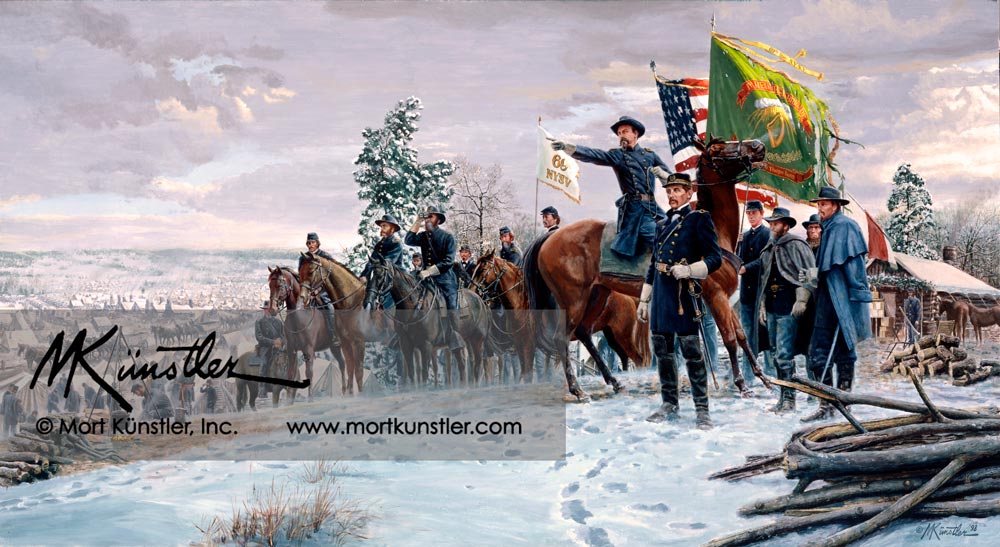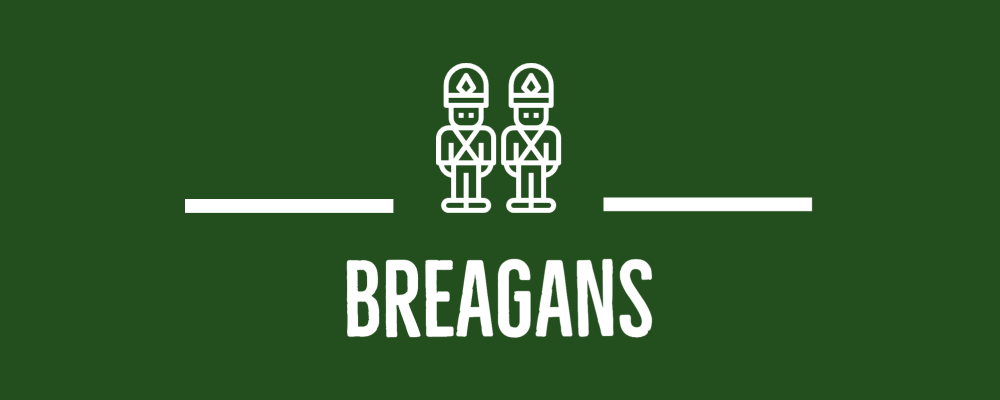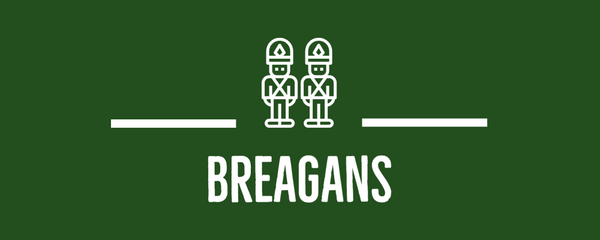Künstler
The Fighting 69th
The Fighting 69th
Couldn't load pickup availability
This is Mort Künstler limited edition print - The Fighting 69th. General Meagher & Irish Brigade, Fredericksburg, Va., December 2, 1862.
LIMITED EDITION PRINTS
Paper Prints
Reproduction technique: Fine offset lithography on neutral pH archival quality paper using the finest fade-resistant inks.
Each print is numbered and signed by the artist and accompanied by a Certificate of Authenticity.
Image Size: 15½” x 29” • Overall Size: 21½” x 34”
Signed Artist’s Proof • Edition Size: 100
Mort Künstler’s Comments
I painted The Fighting 69th because so many people asked for it. In 1991, I accepted a commission from the U.S. Army War College to paint Raise the Colors and Follow Me! It showed General Thomas Francis Meagher and the Irish Brigade charging the Sunken Road at Antietam. For this Irish Brigade picture, I selected a Fredericksburg scene.
The Federal army arrived on the north side of the Rappahannock River across from Fredericksburg on November 17, 1862. The men believed there would be no more fighting that year and began building winter quarters on November 29th and since I enjoy painting snow scenes, I knew the picture had to take place sometime after this date. I planned to feature the famous 69th New York but the regiment had no green flag during the battle of Fredericksburg. Tattered and torn from previous fighting, it had been returned to New York to be replaced. Happily, I found that the colors were not retired until December 2nd, so the distinctive and colorful flag would still be present in my painting. I contacted Dr. James I. Robertson, Jr. at Virginia Tech for weather conditions and learned there was a clearing and warning trend that day. The color guard and officers of the 69th arrived at the Brigade headquarters of General Meagher for the official return of the colors. Colonel Robert Nugent points out to General Meagher the spot where the long-awaited pontoons, which arrived on November 26th, have been placed. Other well known members of the 69th are Capt. John H. Donovan (on horseback to the left with the patch over his right eye) and Major James Cavenaugh (the officer on Donovan's immediate left). Capt. Dennis Sullivan is standing at the far right. The man immediately behind him is the Rev. William Corby, who was Chaplain of the 88th NY.
The green regimental flag still exists today, as do the ribbons. The tears and bullet holes are based on the actual flag. An interesting note is that it says 1st regiment on the flag and not the 69th because the 69th NY was the first regiment of the Irish Brigade. The white and red headquarters flag shows it to be the flag of the 2nd Brigade, 1st Division, 2nd Corps. according to General Order 102 of the Army of the Potomac of 24th March 1862. The white marker with the 69th NYSV also still exists.
These tattered remnants of Irish valor, the regimental colors, were returned to New York and replaced in a formal ceremony with new flags. The brigade’s carpenters built a large log hall in their winter encampment to hold the festivities which were scheduled for December 13th. General Burnside had other plans. The battle started that day, and the Irish Brigade made the deadly assault on Marye’s Heights with green sprigs of boxwood in their hats in place of the missing flags.
Flag expert Howard Michael Madaus was of immeasurable help in my research. So was Ken Powers, the official historian of the 69th Regiment NY. Other historians who helped insure the accuracy of this painting were Frank O’Reilly of Fredericksburg National Military Park, Matt Kelly, Tom Duclose of the New York Military History Museum, Paul Fowler, Steven Sylvia, and Rod Gragg.
Share


Continue Shopping
See more of the Breagans' collection of manufacturers from all around the world
Subscribe to our emails
Subscribe to our mailing list for insider news, product launches, and more.

